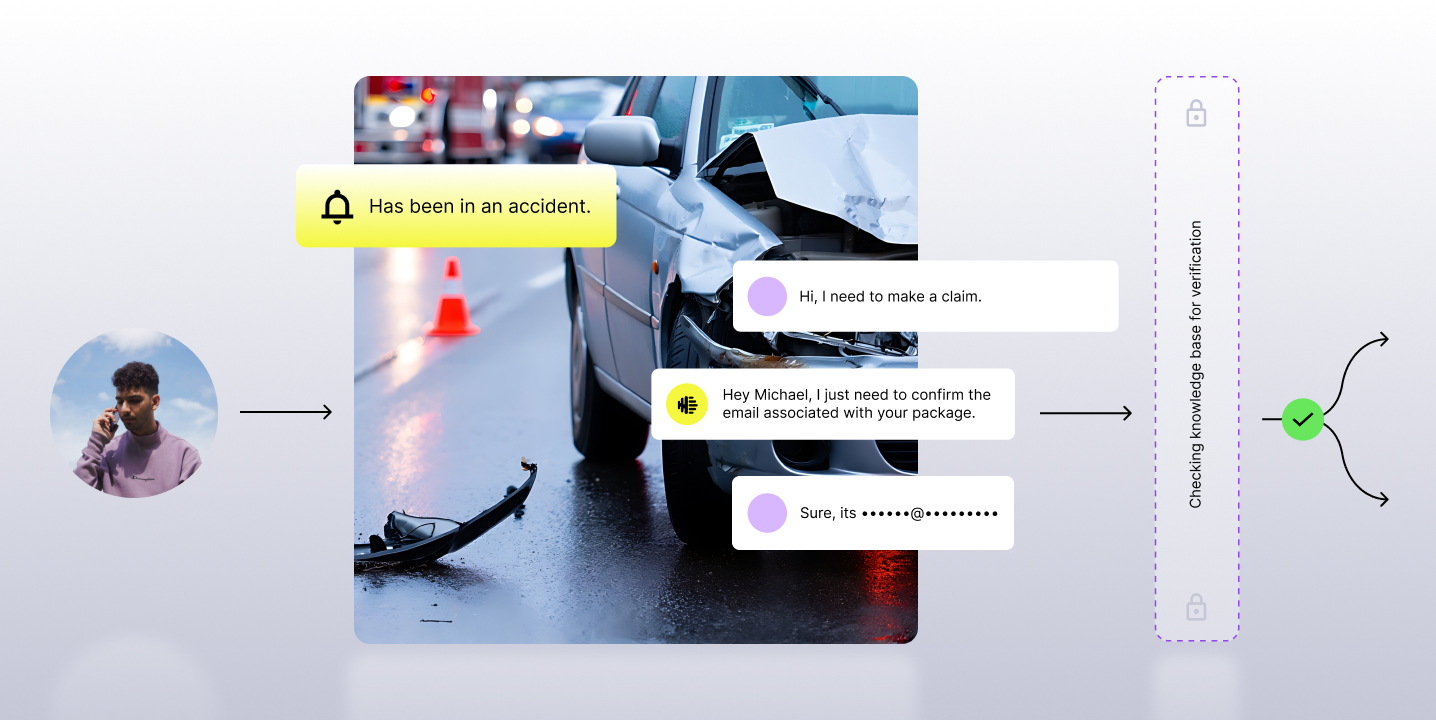The ultimate goal of contact center agent coaching programs is to maximize agent performance to deliver a great customer experience. The best coaching programs drive a continuous improvement to CX.
What good coaching looks like
For agents, coaching empowers them to learn new skills and best practices, allowing them to build better rapport with customers and handle more complex queries. This is what moves them from good to great, and gives an organization confidence those agents are acting as their best brand representatives.
Beyond the agents on the frontlines, supervisors and analysts are able to isolate the areas that need improvement at a per-agent level and address them with targeted feedback and action plans. They can focus on the most critical agent behaviors and reinforce them consistently. In turn, they can boost agent motivation and reduce agent churn.
And bubbling up to leadership, operations teams develop effective programs at both an agent and team level and are able to report back on coaching cadences and the impact of coaching programs on CX metrics.
The result is organizations maintaining the quality of service that drives a world-class CX and boosts overall business growth and ROI.
.png)
The 3 C’s of coaching
There are three reasons to coach, and luckily for us, they all start with the letter C.
- Coaching to CORRECT: Focusing on the behavior (rather than the agent), these are coaching programs built around explaining what could have been done better or differently. This is how agents build competence.
- Coaching to CLARIFY: Built around content and knowledge, these are coaching programs that educate agents on changes in process, compliance norms, new product lines, and new promotions. This helps agents find ways to navigate complex customer encounters and arm them with tools to build better rapport.
- Coaching to CELEBRATE: While correct and clarify focus on behaviors and improvement, celebrate focuses on the success of the agent, praising the things that went well and boost agent morale, and in turn, building confidence.
Knowing what good coaching looks like, and the three pillars of successful coaching programs, lets now dive into the meat of our post - the 10 mistakes that stymie coaching programs.

10 mistakes that stymie coaching programs
1. Programs aren’t personalized
Without 100% visibility into agent performance data, teams aren’t able to custom tailor their coaching sessions to individual agents. This leads to a one-size-fits-all training approach - holding sessions for large groups on a specific topic deemed most important. That’s failing to identify what areas are in need of improvement for each agent, engaging the agents that need more help, and risking repetitive, unnecessary coaching for top performing agents.
2. Sessions aren’t reinforced with context
Coaching with context is critical. Agents need to trust the feedback they’re getting, and reinforcing those detailed sessions with specific examples on the conversation transcript is how it’s done. On top of the impact of the session, coaching with context also significantly reduces disputes between agents and supervisors.
Coaches can drive more transparency and trust if they can easily pull out examples from the calls that this specific agent has taken with the customer - such as being able to quickly listen to a specific portion of the call audio or transcript with the agent during the coaching conversation.
3. Sessions only focus on the what, not the why
Author Simon Sinek encourages organizations to start with the why when it comes to determining and communicating their value proposition. The same theory should be applied to every coaching session taking place: don’t just tell an agent what they should do, but explain to them why they should do it.
Think empathy statements. Teaching agents phrases to evoke empathy is crucial for those agents to build better relationships with customers. However, coaching sessions that tell them why an empathy statement works will help them deliver those phrases more authentically.

4. Programs are not adaptive
Coaching programs that don’t account for agent growth and evolve over time fail to make an impact as time goes on. Adaptive learning fixes that.
Adaptive Learning is a computer-based or online system that modifies the presentation of training material in response to learner’s performance. Adaptive learning uses interaction data to provide tailored and personalized training to each learner.
Adaptive learning, when supported by insights, enables teams to craft individual coaching programs for every agent. When coupled with contact center AI, adaptive learning creates the perfect loop for improving performance. It’s real data on KPIs tied to learning objectives. It provides the ability, with specific examples, to train agents on the most important opportunities and celebrate achievements.
5. Programs utilize too many tools
Simply put, the more services and platforms analysts have to log into and toggle between to do their job, the less productive they’ll be. And that has a direct impact on coaching productivity. Data is in one place, transcripts and call recordings in another, coaching session history in a third. That means more integrations, which means missed data and frustrated analysts.

6. Teams lack a centralized record of performance
Often hand in hand with the previous mistake of having too many systems, a lack of centralized record means performance insights and data are spread across multiple systems, making it challenging to reference previous coaching sessions and monitor progress overtime. When discussion recaps are sent in an email, or submitted through a Google Form for example, upkeep is manual and paper trails are lost over time.
7. There’s no standardized approach
One of the major underlying issues with contact center QA is the manual scoring of customer interactions, and in turn, the different ways of coaching that stem from it. The decision of what conversations to analyze and evaluate is a very different experience based on who the supervisor is. That means different feedback given to agents from supervisor to supervisor. The result is inconsistent coaching programs for every agent, and a lack of visibility into the effectiveness of those programs.

8. Coaching is reactive rather than proactive
Timing is everything, and the longer it takes to coach an agent to correct a behavior or clarify a gap, the more damage that issue can cause. This is especially critical for coaching on compliance - where a single violation can lead to suspension of operation, stiff penalties, or loss of brand reputation. Targeting coaching must be delivered when it matters most - immediately.
9. Teams aren’t monitoring the success of their training programs
To track the success of a coaching session, you need to know who was coached on what, when, and the metrics and behaviors that the coaching session has impacted. Without any sort of coaching archive (specifically at the agent level), there’s little visibility into what coaching sessions have taken place overtime and how measurable KPIs have been improved. On top of that, as agents move from one team to another, managers don’t have the repository of coaching notes to simplify the handover.
10. Teams aren’t celebrating achievements
We’ve heard many of our customers tout the belief that EX = CX, and if employee experience is poor, the customer experience suffers as a result. Only focusing on coaching on clarifying and correcting, rather than taking the time to celebrate agents doing great work doesn’t do an organization any good in boosting agent morale and employee satisfaction.

To avoid these mistakes, you need data
You may have noticed we brought up data and insights on a number of our list items. That’s because these insights go hand in hand with your data-driven coaching programs.
From empowering team leaders with agent performance data, to building better coaching programs around specific examples, success rests in harnessing the power of performance analytics to create a coaching culture around continuous improvement. Learn more about Agent Performance Analytics here.
By mitigating these mistakes, you create more data-driven, more personalized, and more transparent coaching programs everyone at your organization will love.


















